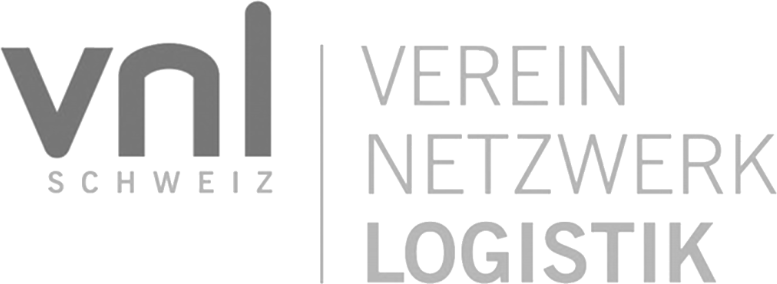Do you know the most important phases of the customer cycle and the touchpoints along the customer journey?
Do you know which measures can be used to stop churn and which activities can be used to develop customers further? How to inspire your customers so that they recommend your company to others?

From getting to know a customer to becoming a fan – accompany your customers on their journey!
From getting to know a customer to becoming a fan – accompany your customers on their journey!
The life cycle of customers in a logistics company is determined by the handling of transports and the handling of complaints. But this is only a part of the customer journey.In a presentation for the association Verein Netzwerk Logistik Schweiz (VNL, Q_PERIOR reported on the challenge of keeping an eye on the many touchpoints on the customer journey.

Source: www.q-perior.com Presentation VNL CH: Q_PERIOR – Inspiring Logistics Customers – Digitalization Starts with People
The customer journey begins with the brand image
Medium-sized logistics companies sometimes have a hard time with their brand image. How should the company present itself on the market? Who is the face of the company and how will the web presence be designed? Who specifically is the target group and on which channels is it best to address them? Can I keep up with the big competitors with my budget?
You can see it in the graphic: the first point of the journey is the website as the company’s flagship.
Attract new customers and prevent churn
Especially due to the offers on the logistics platforms, customer loyalty is weakened, communication is becoming more and more anonymous. Because as a logistics provider, I no longer have direct customer contact.
Since customers no longer stay with the same service provider out of loyalty (or convenience) and costs are being looked at more and more, it is essential to retain existing customers. Because the competition never sleeps.
Retaining customers is not only achieved by perfect handling of transport, picking and warehousing activities. Marketing and customer service are also becoming increasingly important.
Strengthening the brand image with suitable marketing measures
Marketing must address exactly the right market segments with exactly the right content. Today, this is quite possible via social media marketing, and many companies are already using marketing automation tools. The saved addressees have signed up for a newsletter.
Interplay between marketing and sales
But what about the hundreds of contacts stored in the CRM? How can they be addressed? And how is it possible to segment exactly the right people?
A website tracking tool tracks which newsletters, white papers or mailings have been opened. And which parts of your own website were visited, the length of stay per page, clicked links, etc.?
It is optimal if the results of the marketing campaigns can be seen in the contacts in the CRM, so that the account managers can see who is interested in which service.
Intelligent logics are used to send suitable content to the right addressees. And structured information from CRM can be used for this purpose – so it’s a two-way exchange of data that produces the best results.
Smart use of knowledge from the CRM database
Companies that do not link marketing and CRM leave valuable information unused. After all, the CRM system already “knows” a lot about the customers and prospects. It knows the current relations and load types. It knows the potential of target and existing customers. It knows the losing customers who require special attention. The numerous segmentation options from the CRM database are the optimal basis for marketing activities.
A new lead has been generated
If a new prospect has then been generated by marketing, this lead must be transferred to the CRM if it fits the service portfolio. With good integration, this happens automatically and an alarm is triggered.
Now it’s sales’ turn to take over the lead, qualify it, research it, try to have a qualified conversation and elicit possible potentials.
The next step in the life cycle is reached and the lead becomes the target customer.
In the following phase, sales presents the services, prepares offers, gets to know the “buying center” and addresses the right stakeholders on appropriate topics.
The conversion was successful
If the sale is successful, the target customer is converted into a customer, a new customer message is sent, the new account is created in ERP and Accounting.
Transfer to Customer Service
If you only hand over the new customer to Customer Service, you again lose important opportunities. Not only do the customer’s operational processes now have to be handled by Dispo and Service, the new customer must also continue to receive sales support. Many companies have their own customer service representatives for this purpose. In others, the sales staff are again in demand here, because they have an eye on the overall potential of the customer and can continue the discussions from the pre-sales phase.
Customer retention – an important phase for marketing as well
In the customer loyalty phase, marketing becomes active again and keeps the customer informed, invites them to events, conducts customer satisfaction surveys and returns the results to customer support. Ideally, this should be done without media breaks, so that everything is visible and can be evaluated in the CRM.
Developing strategy with data-driven decisions
The results of the customer surveys serve management as a basis for decisions on process optimization or expansion of business areas. If, for example, many people are interested in the value-added services offered, it is worth setting up a special campaign for this. This is again carried out by the marketing department. A theme day, an online workshop, white papers and individual appointments.
Complaints and satisfaction management
In the meantime, the new customer’s operations are up and running. From time to time, complaints and damages end up at Customer Service. If they remain there or are possibly not documented, an important piece of the puzzle for customer development and quality management is missing.

A QM cockpit collects all important developments and KPIs
Ideally, all information on customer satisfaction, delivery reliability, payment behavior and damage is collected in one place. This makes it possible to quickly identify where management needs to intervene. Proactive alerts can be triggered to account managers and sales management, and data-based workflows can also be used to trigger recommended actions to service and account management/sales.
Farming and existing customer expansion
Throughout the customer lifecycle, promising existing customers are permanently supported and expanded. Cross-selling potentials are found in discussions and converted into new business in a structured manner.
Many departments in the company have a share in the life cycle of a customer
Marketing, sales, customer care, service, scheduling, billing, all make their contribution.
Marketing, sales, customer care, service, scheduling, billing, all make their contribution.
What does your customer journey look like?

Source: www.q-perior.com Exemplary application example of a Customer Journey for a logistics company.
In a webinar for new members of the Swiss Logistics Network (VNL) association, the consulting firm Q_PERIOR presented the factors that influence customer experience in logistics and the “touch points” that a logistics customer journey can have.
Understanding customer behavior and becoming even more successful
The information is all available in the company and the art is really just to bring it together in a structured way and derive activities from it.
This can be achieved with a CRM tool that is well integrated into operations and marketing, and with end-to-end processes between marketing, sales and customer care.
This article was published on 15.03.2021 in the BVL-Blog.













